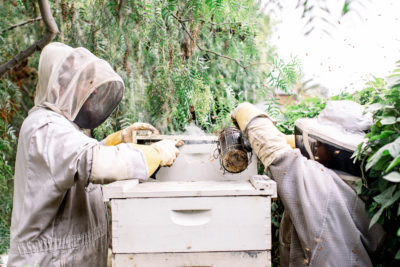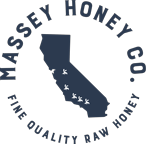
Autumn Beekeeping
Posted on October 20, 2022
Autumn brings many challenges for the beekeeper. Shortened days and daylight means less foraging and collecting of pollen and nectar. The queen is raising fewer bees and the overall population of bees in the hive is beginning to decrease, as drones (males bees) are being kicked out of the hive and less eggs are being made. Autumn also tends to be a dry time of the year. Drought-like conditions lead to a decrease in floral blooms in many regions of Southern California. This combination of less blooms, a decreased bee population, and less time to forage creates an environment where varroa mites and other pathogens can begin to create problems for bees and their hive.
While many beekeepers are busy in the Spring and Summer gathering honey and moving hives for pollination, the Fall is actually a much more important time to focus on the heath of the colony. The health of a beehive going into the winter will determine its strength in the spring and potential for making honey into the next year. Consequently this time of year should be focused on the needs of the colony, and in our opinion, the most important season for the beekeeper.
So, what are beekeepers up to exactly? After noting the strength of each colony or hive, we are now beginning to combine weaker hives to strengthen them for the winter. Supplemental nutrition is sometimes offered where needed to help boost hives for potential pollination in the later winter/early spring, or just to help build their strength where needed (i.e. nectar or pollen dearth). We are also beginning to prepare nucs (smaller colonies split from large, strong beehives) to overwinter. These overwintered nucs will be kept in our breeding apiary where they will then be used to help boost weaker colonies coming out of Winter, or sold as starter colonies to those looking to begin beekeeping or to add to their apiaries.
But Fall beekeeping is not without the grandest part of all….autumn wildflower honey! While we do not typically harvest other varieties of honey at this time, our autumn wildflower honey in Southern California is especially delicious. Many of our stronger hives continue to produce wildflower honey, and with the occasional rain, new blooms arise, creating unique characteristics to this every changing variety.
Last year we wrote a post about out favorite fall blooms (check it out here) and what to plant in the autumn to help the bee population. Honey bees in Southern California are pollinating and attracted to many of these plans and trees, helping to shape the taste of the delicious honey they are making.
